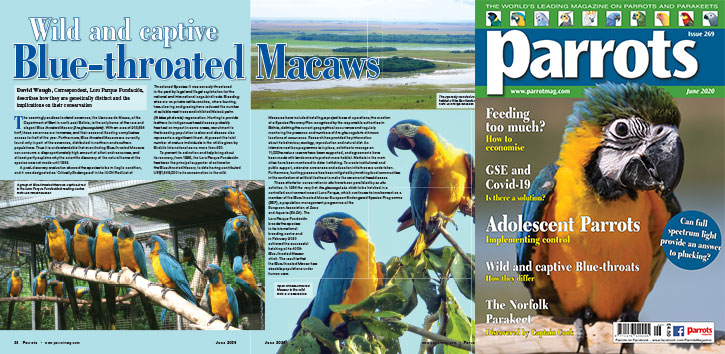
By David Waugh
The seemingly endless lowland savannas, the Llanuras de Moxos, of the Department of Beni in north-east Bolivia, is the only home of the rare and elegant Blue-throated Macaw (Ara glaucogularis). With an area of 213,654 km2, these savannas are immense, and their seasonal flooding complicates access for half of the year. Furthermore, Blue-throated Macaws are currently found only in part of the savannas, distributed in northern and southern populations. Thus it is understandable that even finding Blue-throated Macaws can consume a disproportionately high amount of effort and resources, and at least partly explains why the scientific discovery of the natural home of the species was not made until 1992.
A post-discovery evaluation showed the species to be in fragile condition, and it was designated as ‘Critically Endangered’ in the IUCN Red List of Threatened Species. It was severely threatened in the past by legal and illegal exploitation for the national and international cage-bird trade. Breeding sites are on private cattle-ranches, where burning, tree-clearing and grazing have reduced the number of suitable nest trees and inhibited Motacú palm (Attalea phalerata) regeneration. Hunting to provide feathers for indigenous headdresses probably has had an impact in some areas, recruitment to the breeding population is slow and disease also represents a significant threat. At present the total number of mature individuals in the wild is given by BirdLife International as no more than 250.
To prevent its extinction and help bring about its recovery, from 1995, the Loro Parque Fundación has been the principal supporter of actions for the Blue-throated Macaw, to date having contributed US$1,945,000 to its conservation in the wild.
